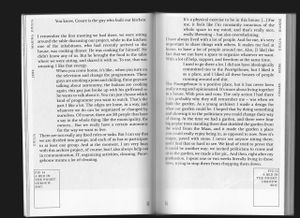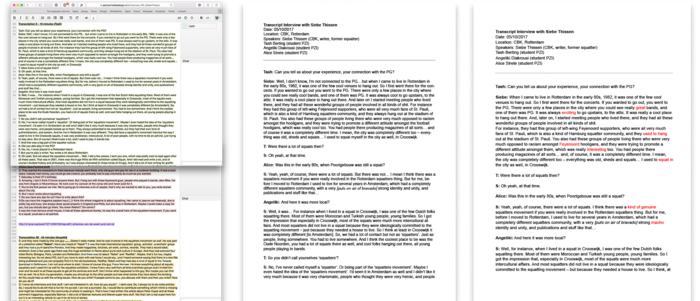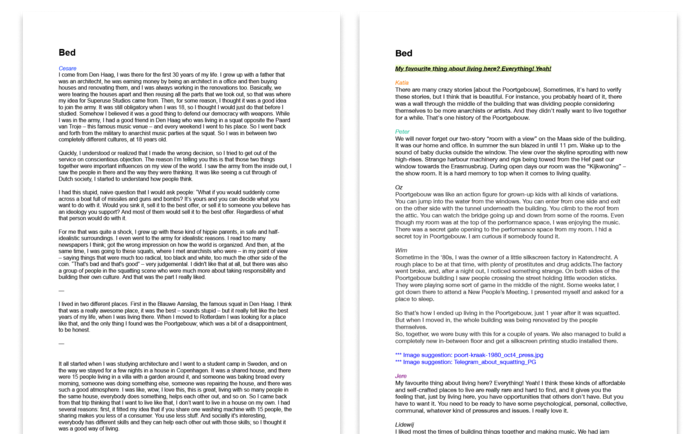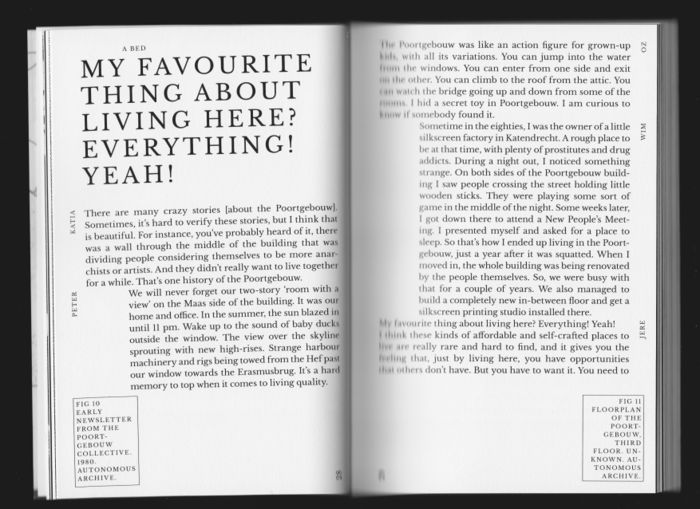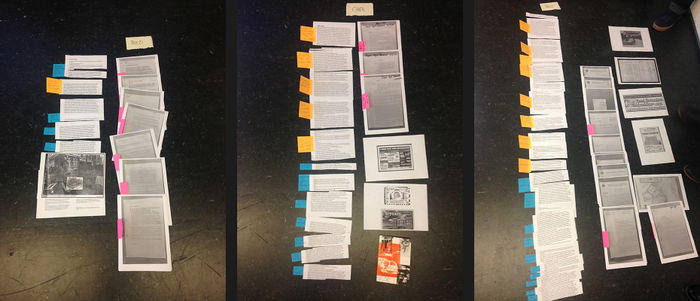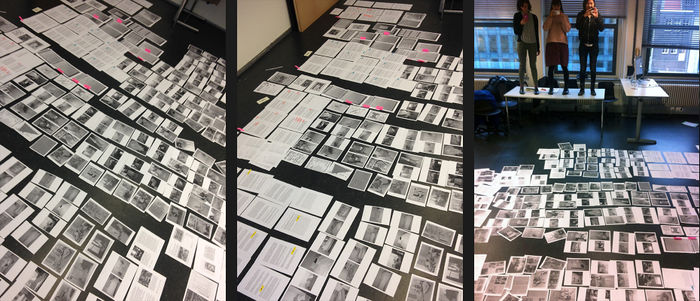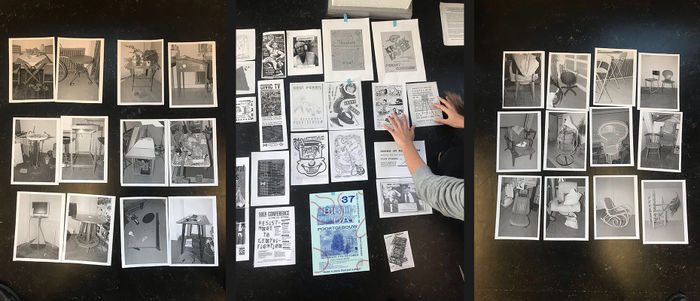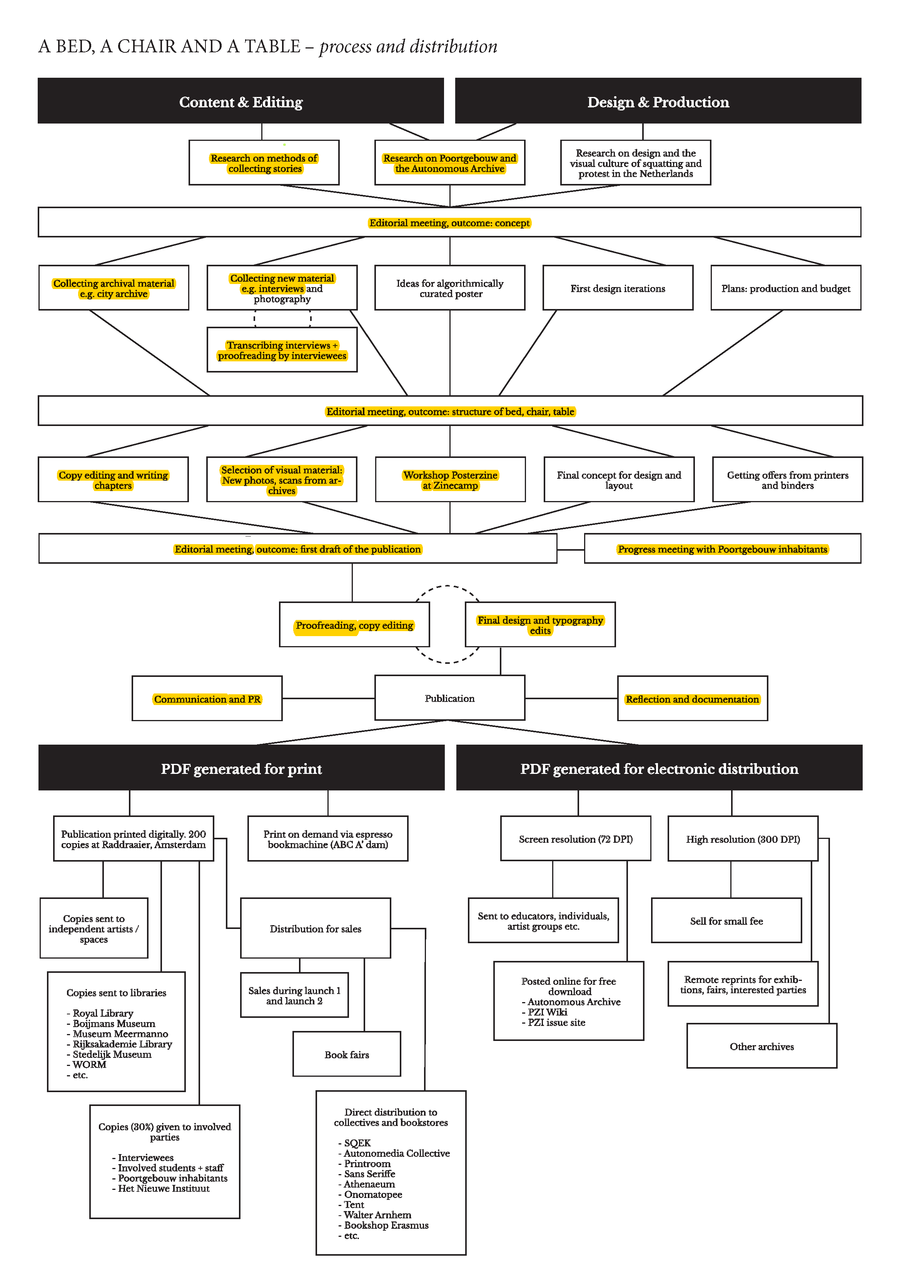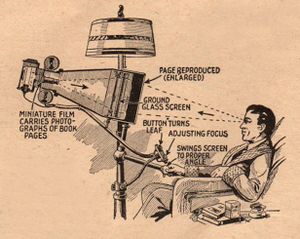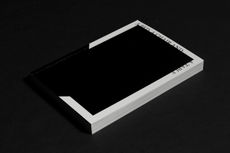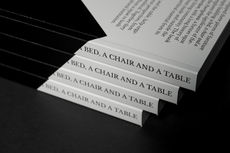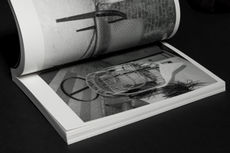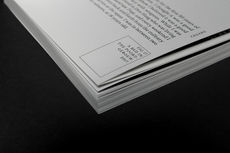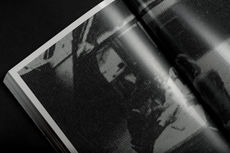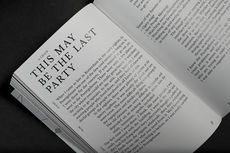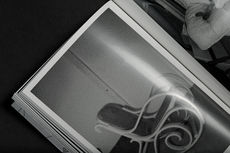User:Tash/Special Issue 04: Difference between revisions
No edit summary |
|||
| (11 intermediate revisions by the same user not shown) | |||
| Line 16: | Line 16: | ||
*Communicating with interviewees, parties from the PG | *Communicating with interviewees, parties from the PG | ||
[[File:Emailchain1.png| | [[File:Emailchain1.png|700px|frameless|center]] | ||
==On the editorial process== | ==On the editorial process== | ||
| Line 26: | Line 26: | ||
*Prepared interview [https://pad.pzimediadesign.nl/p/interviews_PG_method methodology], [https://pad.pzimediadesign.nl/p/questions_PG_autonomous_archive questions] and [https://pad.pzimediadesign.nl/p/interviews_PG_autonomous_archive schedule]. | *Prepared interview [https://pad.pzimediadesign.nl/p/interviews_PG_method methodology], [https://pad.pzimediadesign.nl/p/questions_PG_autonomous_archive questions] and [https://pad.pzimediadesign.nl/p/interviews_PG_autonomous_archive schedule]. | ||
*Helped establish the collective narrative idea, combining not just different voices but sources of material, creating a 'parallel archive' of oral histories to flow alongside visual and historical documents from the AA | |||
*Conducted interviews, wrote up transcripts, proofread transcripts, communicated with involved parties for final edits. | *Conducted interviews, wrote up transcripts, proofread transcripts, communicated with involved parties for final edits. | ||
<br> | |||
[[File:SI4Transcript1.png|700px|frameless|center]] | |||
<br> | |||
[[File:SI4Chapter1.png|700px|frameless|center]] | |||
<br> | |||
[[File:Bedchairtable_11.jpeg|700px|frameless|center]] | |||
<br> | |||
*Once the title was decided, editing text and photography into chapters: Bed (personal), Chair (communal) and Table (social & political). <br>Method: loosely chronologically, narrative first | *Once the title was decided, editing text and photography into chapters: Bed (personal), Chair (communal) and Table (social & political). <br>Method: loosely chronologically, narrative first | ||
*Learnt how to edit the narrative of the images as well as the text | *Learnt how to edit the narrative of the images as well as the text | ||
<br> | |||
*Writing the [https://docs.google.com/document/d/1fBw1HTB-IN-nTGavH4Z10iEbHVbO8QHa7P1H78wNy80/edit?usp=sharing introduction], [https://docs.google.com/document/d/1mowD5CzfG4jbV2kOk1yM3UGmJQGAqWK2f7ez-K8anIo/edit?usp=sharing blurb] and | [[File:SI4Process1.jpg|700px|frameless|center]] | ||
<br> | |||
[[File:SI4Process2.jpg|700px|frameless|center]] | |||
<br> | |||
[[File:SI4Process3.jpg|700px|frameless|center]] | |||
<br> | |||
*Writing the [https://docs.google.com/document/d/1fBw1HTB-IN-nTGavH4Z10iEbHVbO8QHa7P1H78wNy80/edit?usp=sharing introduction], [https://docs.google.com/document/d/1mowD5CzfG4jbV2kOk1yM3UGmJQGAqWK2f7ez-K8anIo/edit?usp=sharing blurb] and [https://docs.google.com/document/d/1r0z6GzqKeT1NGU4tYoynkrWqRn2SwNBWuI5IviYjfbU/edit?usp=sharing biographies] | |||
*Proofreading (on paper and online). Next time, more attention on this; use different media to proofread. | *Proofreading (on paper and online). Next time, more attention on this; use different media to proofread. | ||
*Worked on documentation of project and distribution model of publication | |||
[[File:Si4 process distribution manual T.png| | [[File:Si4 process distribution manual T.png|900px|frameless|center]] | ||
==On archiving== | ==On archiving== | ||
| Line 72: | Line 85: | ||
==Going forward== | ==Going forward== | ||
* | [[File:PostDigitalPrint1.jpg|thumb|Image via Post-Digital Print: Illustration, Everyday Science and Mechanics magazine, 1935]] | ||
* This means more technical production | * This special issue was more about specialisation; next special issue experimentation | ||
* This means more technical production! | |||
* Continue exploring the relationship between types of information | * Continue exploring the relationship between types of information | ||
* | * How can I experiment more with the relationship between content - design - system? | ||
* For later: editorial design for the future > what's next for print, what's next for e-books and digital magazines? | |||
* References: | |||
**''Post Digital Print'' by Alessandro Ludovico http://postdigitalprint.org | |||
** ''Journalism That Stands Apart'' New York Times report https://www.nytimes.com/projects/2020-report/ | |||
** Editions at Play ('Books powered by the magic of the internet') https://editionsatplay.withgoogle.com/#/ <br> "We want to show that digital has narrative qualities that cannot transfer to print. Books which are written for the web can be: data-led, locative, generative, algorithmic, sensor-based, fluid, non-linear, expandable, cookie-ish, personalised, proximal, augmented, real-time, time-sensitive, adaptive, collaborative, and share-y." | |||
==More photography== | |||
<gallery widths=230px heights=165px> | |||
Bed chair table lowres-31.jpg | |||
Bed chair table lowres-34.jpg | |||
Bed chair table lowres-35.jpg | |||
Bed chair table lowres-40.jpg | |||
Bed chair table lowres-37.jpg | |||
Bed chair table lowres-22.jpg | |||
Bed chair table-24.jpg | |||
Bed chair table-21.jpg | |||
</gallery> | |||
Latest revision as of 14:47, 11 December 2017
Our first Special Issue is a publication about the Poortgebouw, inspired by the collective's own Autonomous Archive.
Extract from our Special Issue 04 website: A Bed, A Chair and a Table is a publication about a former squat and vibrant living community in the South of Rotterdam. In this book, oral histories from inside and outside the Poortgebouw are interlaced with material from various institutional and personal archives. By bringing together tales of resilience, political struggle, frustration and friendship with historical documents, we bring forward new perspectives about the Poortgebouw's history and its importance in the contemporary city.
On organization
We organized ourselves into two main groups; the first focussed on content and the second on design & production. Considering this was our first publication; and that it concerned print (the medium I'm most experienced in), I decided to join the content team. This is the field that I know I want to specialise in, and I saw this project as a great opportunity to learn more about the publishing process, from start to finish. I'd never worked in such a large and diverse team before and I found the process to be incredibly rewarding.
Some things I did / learned:
- Managing tasks & schedules on our wiki: https://pzwiki.wdka.nl/mediadesign/Autonomous_Archive/hand-curated
- Importance of setting up clear expectations between our groups. Channels of communication and conflict resolution methods should be agreed on in advance.
- Aggregative democracy is not always the most effective model! We learnt to try different methods of decision-making, like making priority lists, asking a third party for opinions.
- The traditional print publishing workflow (including budgeting, licensing & distribution)
- Communicating with interviewees, parties from the PG
On the editorial process
- Research on the Poortgebouw and getting to know it's inhabitants: through interviews, through the wiki, through online material and city archives
- Concept development: coming up with a clear WHY for our publication
- Why / in what ways is the Poortgebouw valuable to its inhabitants / its surroundings / society?
- Why is it important to archive the Poortgebouw's history?
- Prepared interview methodology, questions and schedule.
- Helped establish the collective narrative idea, combining not just different voices but sources of material, creating a 'parallel archive' of oral histories to flow alongside visual and historical documents from the AA
- Conducted interviews, wrote up transcripts, proofread transcripts, communicated with involved parties for final edits.
- Once the title was decided, editing text and photography into chapters: Bed (personal), Chair (communal) and Table (social & political).
Method: loosely chronologically, narrative first - Learnt how to edit the narrative of the images as well as the text
- Writing the introduction, blurb and biographies
- Proofreading (on paper and online). Next time, more attention on this; use different media to proofread.
- Worked on documentation of project and distribution model of publication
On archiving
- First time working with archives, practically and theoretically
- Archive as both a tool (for memory, for resistance) and a statement (of legitimacy, of criticism)
- Working with the scanner, developing metadata and user interface of the AA
Annet Dekker's lecture:
- Interest in systems: how do they function? how are they built, and how are they accessed? Pivot from the content of the archive to the system of the archive.
- In the past, archives were powerful control systems - creating identity, history. Since then the impetus for archiving has evolved, but the role of archivists, and the systems have stayed much the same.
- Archives produce as much as they record
"Archives cannot be treated solely or even primarily for the information they bear" - Terry Eastwood, What is archival theory, 1994
"Every interaction, intervention, interrogation and interpretation by creator, user and archivist is an activation of the record." - Eric Ketelaar, Archives as Spaces of Memory, 2008 - How the system is organized influences what the archive produces. Point of tension: professionalization vs autonomy & openness
Rosemary Grennan workshop:
- Archiving as an active practice, the archive as a living and creative site
- Wikis as open libraries and social spaces for archives to exist in; how can the taxonomy be optimised? how to standardise metadata while maintaining political integrity?
- How can the publishing/publicness of an archive really be used to activate the archive?
- What does it mean to be Autonomous?
- "Archiving from below" - from History from Below http://www.history.ac.uk/makinghistory/themes/history_from_below.html
History from below seeks to take as its subjects ordinary people, and concentrate on their experiences and perspectives, contrasting itself with the stereotype of traditional political history and its focus on the actions of 'great men'. - 10 Theses on Archive
- On relationship between institutional and other archives: An archive does not just supplement what is missing in state archives, it also renders what is present unstable.
- 'Don't Wait for the Archive': To wait for the state archive, or to otherwise wait to be archived, may not be a healthy option.
- Interference archive
On publishing & free culture
- The act of publication as a politicial statement, especially important in subcultures like squatting.
- In the context of our book, the printed document is an opportunity to fix a narrative (vs the paper archive which is less curated and the wiki which is dynamic)
- Zineculture = proto social network (http://motelspatie.nl/zinedepo/ and http://zinewiki.com/Zine)
- Publishing In The Realm of Plant Fibers and Electrons
by Temporary Services
- Physicality of printed material is one of its unique and valuable characteristics. ‘Printed materials actively inhabit our spaces and exist as social entities… they are a social-spatial currency’
- Still, ebooks and PDFs allow for circulation via screen / home printing / archiving and remote reprints. Free, easy to spread rapidly
- ‘There is a need to craft a variegated approach to how you create, publish, distribute and build a social eco-system around your efforts’
- Research on the history of computation, the politics of software
- Importance of understanding the software you are using; being technologically literate is crucial for any graphic designer or content creator
- the evolution of Free Culture licenses can be understood by the three models of Democracy: Aggregative, Deliberative and Agonistic
Going forward
- This special issue was more about specialisation; next special issue experimentation
- This means more technical production!
- Continue exploring the relationship between types of information
- How can I experiment more with the relationship between content - design - system?
- For later: editorial design for the future > what's next for print, what's next for e-books and digital magazines?
- References:
- Post Digital Print by Alessandro Ludovico http://postdigitalprint.org
- Journalism That Stands Apart New York Times report https://www.nytimes.com/projects/2020-report/
- Editions at Play ('Books powered by the magic of the internet') https://editionsatplay.withgoogle.com/#/
"We want to show that digital has narrative qualities that cannot transfer to print. Books which are written for the web can be: data-led, locative, generative, algorithmic, sensor-based, fluid, non-linear, expandable, cookie-ish, personalised, proximal, augmented, real-time, time-sensitive, adaptive, collaborative, and share-y."

